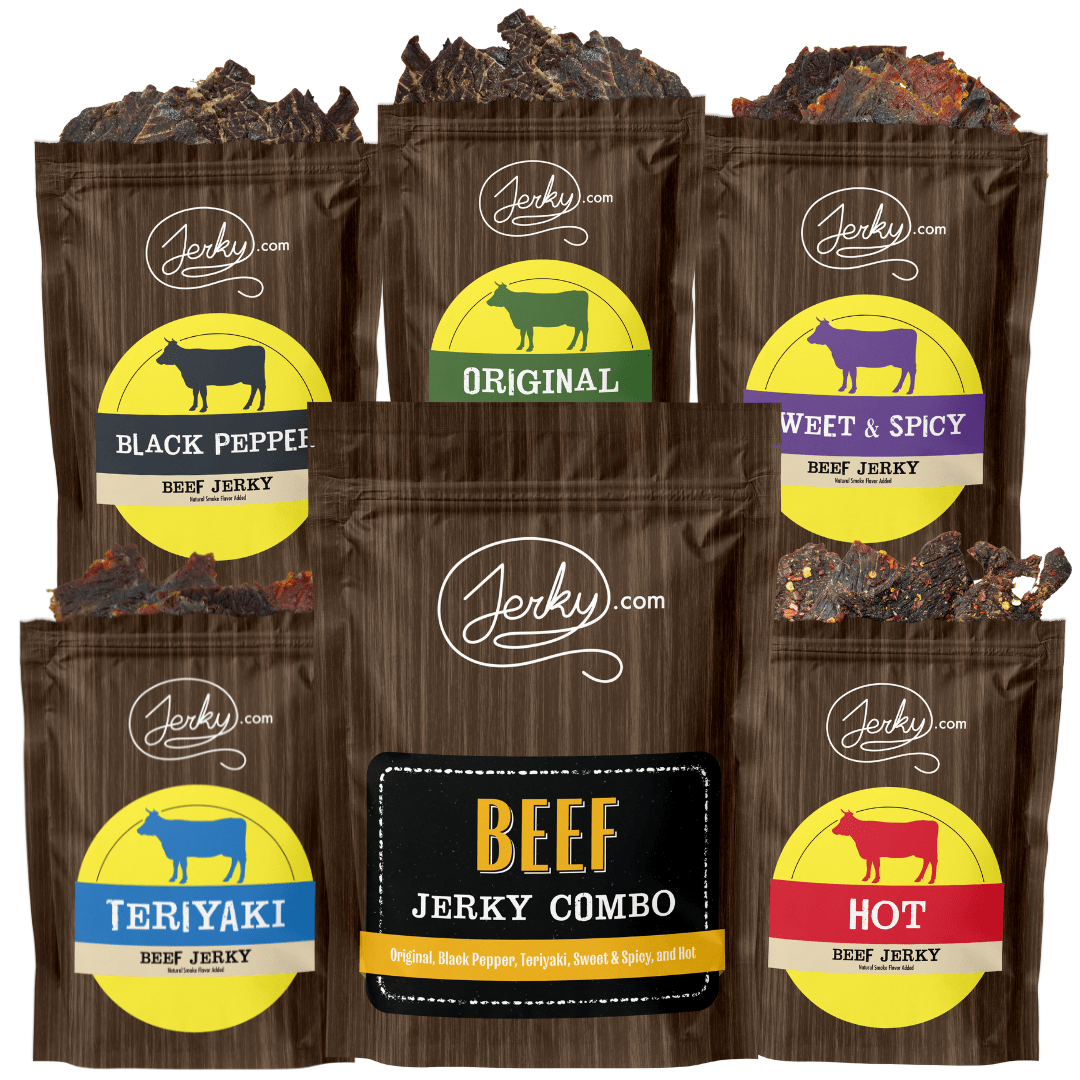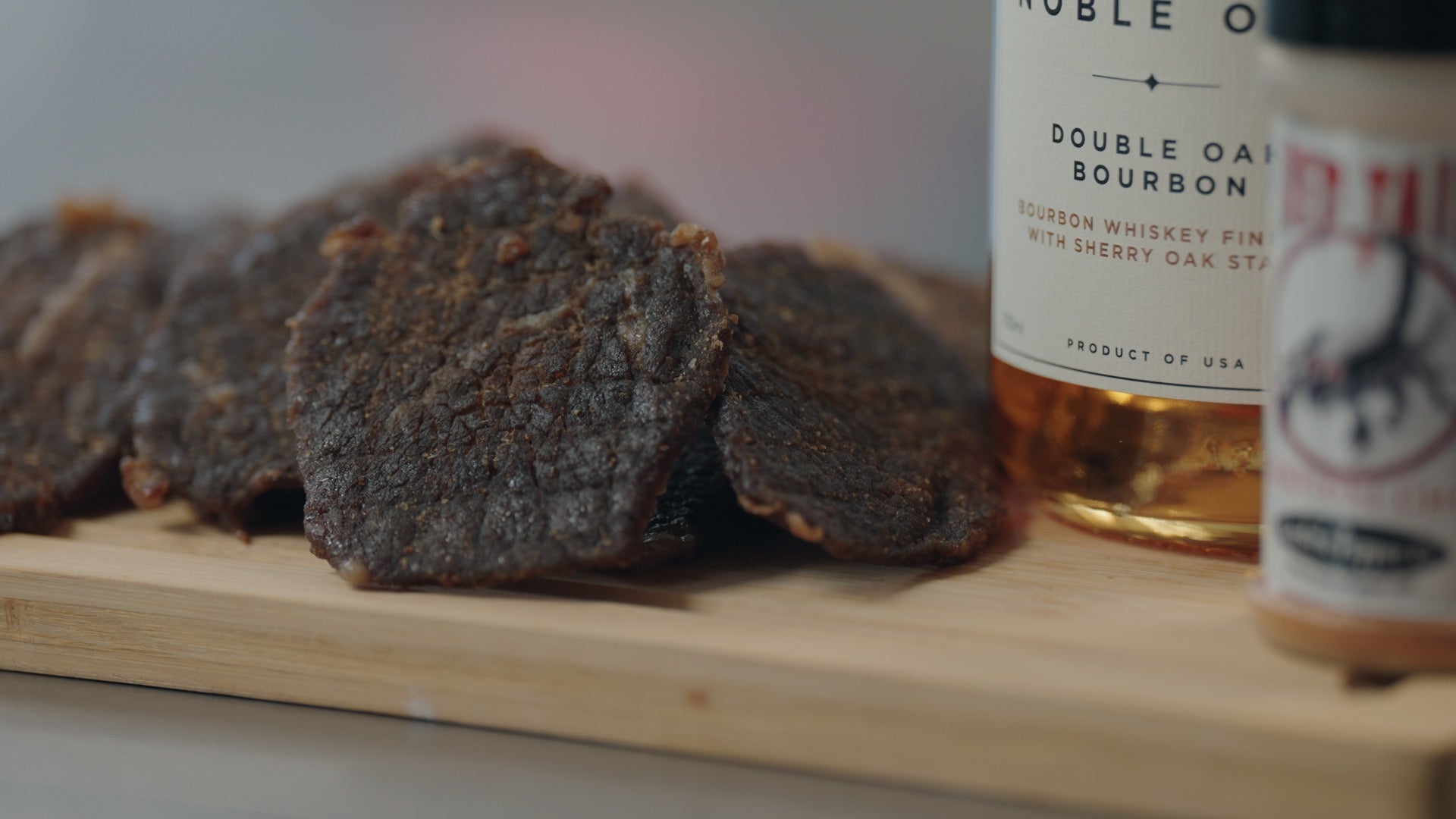How Jerky is Made
Jerky is essentially the drying of a meat product for either immediate or future consumption. With this method of preservation, the normal processes that would render meat inedible (bacterial growth and fungal contamination) are held at bay, keeping the food safe for consumption for an extended period of time. This method has been around for centuries and has long been the preferred process of preserving meat products (as opposed to freezing or using chemical treatments).
Drying meat to its proper moisture content helps preserve it to keep the meat fresh for longer periods of time. While earlier cultures simply hung meat out to dry for storage, today we are able to apply many kinds of cures or flavorings to the meat before preservation, enabling us to create a wide variety of jerky with different flavors and textures. There are also many variations on the theme and foods such as sausages and smoked meats were influenced by the techniques developed in the evolution of jerky production. There are many products in the marketplace which are sold as jerky which consist of highly processed, chopped and formed meat, rather than sliced the traditional way. We don't consider that jerky at all!
Every batch starts with cutting 100% premium choice beef into thin or thick strips (you can go with or against the grain). To make it easier to slice, freeze it for about 30 minutes before slicing. Trim the fat as you go along since fat does not dry and could make the jerky go bad. Next marinate the meat in the solution of your choice and place in the refrigerator for 4 to 24 hours to allow the meat to absorb the flavor. This step is optional; the additional moisture can make dehydration take longer, and the resulting jerky might be stickier. Then season it with any blend of seasonings you wish and dehydrate the meat leaving enough room between the pieces to allow air to flow around the meat. Avoid letting the meat touch if possible. You can use a regular household oven, but we here use a USDA inspected smoke chamber (at least at 160 degrees) using a variety of different wood chips. Allow 6 to 12 hours until the jerky meets your satisfaction...don't forget to check on it. Let it cool for at least 4 hours and enjoy!
Looking for more information on how Jerky is made? Better yet, are you wanting to learn to make it yourself? Here are a few more resources to check out:
For those of you who love to experiment in the kitchen and enjoy creating your own unique flavors of jerky, we have the perfect site for you. Beef Jerky Recipes is a FREE online database of the best jerky recipes in the world. Here you can search 100's of Jerky Recipes by Meat Type, Flavor, and Cooking Method. Users can also rate recipes, submit their own, contribute to great forums and receive great up-to-date content about everything jerky-related. This site is highly recommended for jerky enthusiasts.
To help educate you on the dehydration process of jerky and to get a crash-course on how it's made then check out this page provided by the good folks at The University of Georgia. This National Center for Home Food Preservation provides detailed information on the entire jerky process as well as safety information and tips that we find to be very helpful.
The United States Department of Agriculture Fact Sheets page provides a detailed listing on the Food Safety of Jerky. Here you will find information regarding the cook time and temperature, any health related concerns relating to jerky, and the U.S.D.A's recommendations for a sanitary cooking environment.
Washington State University provides food safety information guidelines for Making Meat Jerky. This is a great source of information about the different meat types used to make jerky, the preparation process involved and the storing of the finished product.


